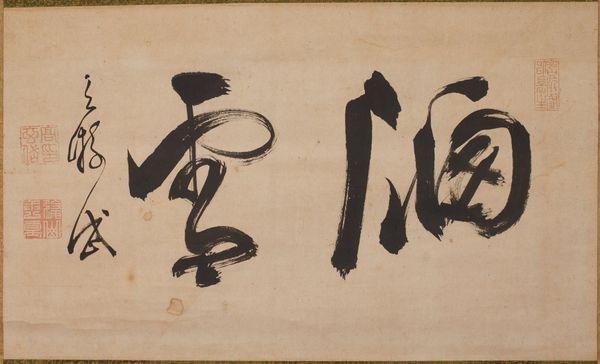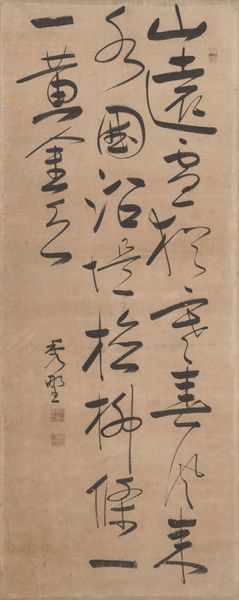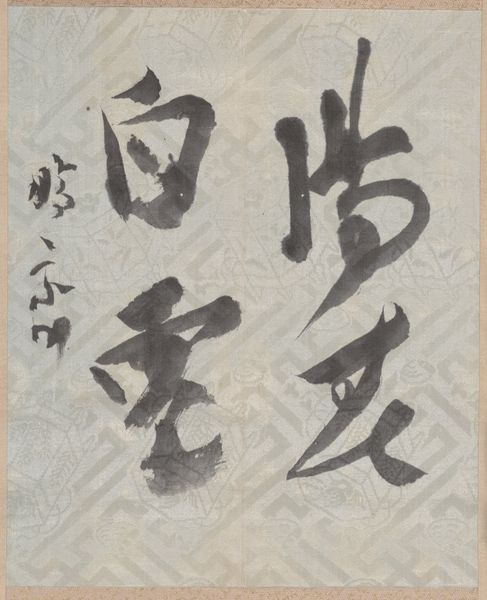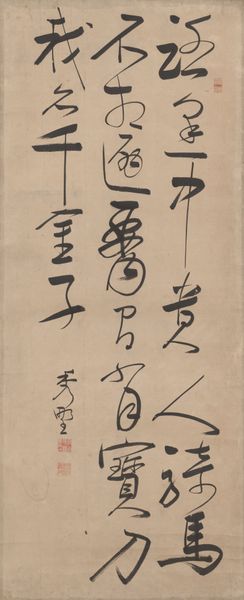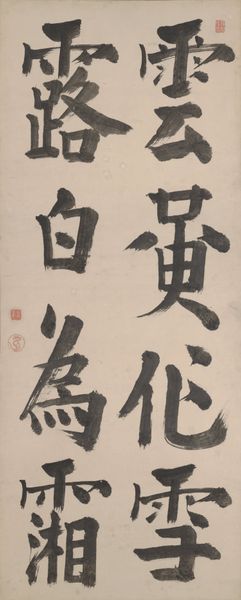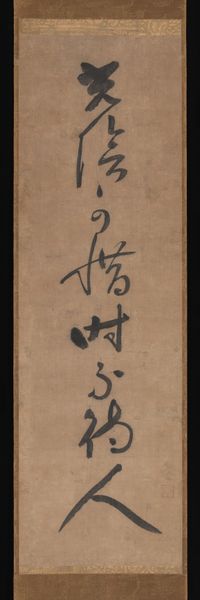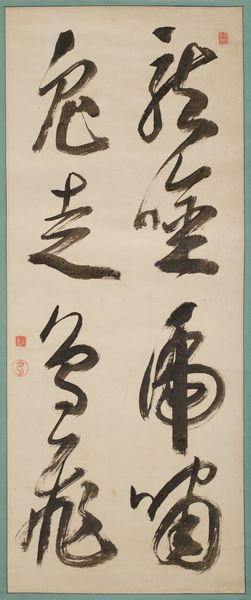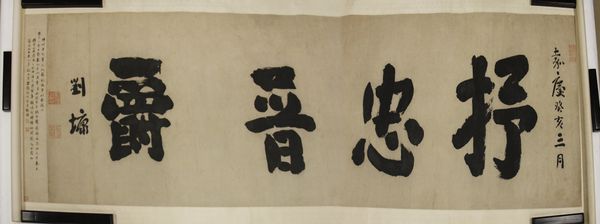
paper, ink-on-paper, ink
#
asian-art
#
paper
#
ink-on-paper
#
ink
#
orientalism
#
calligraphic
#
watercolor
#
calligraphy
Dimensions: 51 1/8 × 21 1/16 in. (129.86 × 53.5 cm) (image)
Copyright: Public Domain
Nakae Tōjū created "Bring the Qin" with ink on paper in Japan, sometime in the first half of the 17th century. This work embodies the Confucian ideals Tōjū championed, advocating for harmony and social order. As a philosopher and educator during the early Edo period, Tōjū sought to revive Confucianism. His teachings emphasized personal cultivation, filial piety, and the importance of moral leadership, challenging the dominant neo-Confucianism promoted by the Tokugawa shogunate. The calligraphy itself, bold and expressive, reflects Tōjū’s commitment to conveying complex ideas simply and directly. The act of writing, in this context, becomes a powerful tool for social commentary, subtly critiquing the political landscape while promoting alternative ethical frameworks. To understand Tōjū’s work, we need to consider the intellectual and political currents of his time, exploring archival texts and examining the philosophical debates that shaped his thought. By situating this artwork within its specific historical context, we can fully appreciate its significance as both a work of art and a testament to the enduring power of ideas.
Comments
minneapolisinstituteofart almost 2 years ago
⋮
“Bring the Qin” 抱琴, written by Nakai with a relatively dry brush, refers to the final line of a poem by the Tang dynasty literatus Li Bai (701–762). The qin is a seven string instrument that is plucked. Li Bai’s poem, entitled “Drinking with a Hermit in the Mountains,” reads: Two of us drinking together as mountain blossoms open;One cup, another cup, still one more cup—I’m feeling a bit drunk and the time has come for you to depart,But tomorrow morning, if you like, come again and bring the qin!
Join the conversation
Join millions of artists and users on Artera today and experience the ultimate creative platform.

